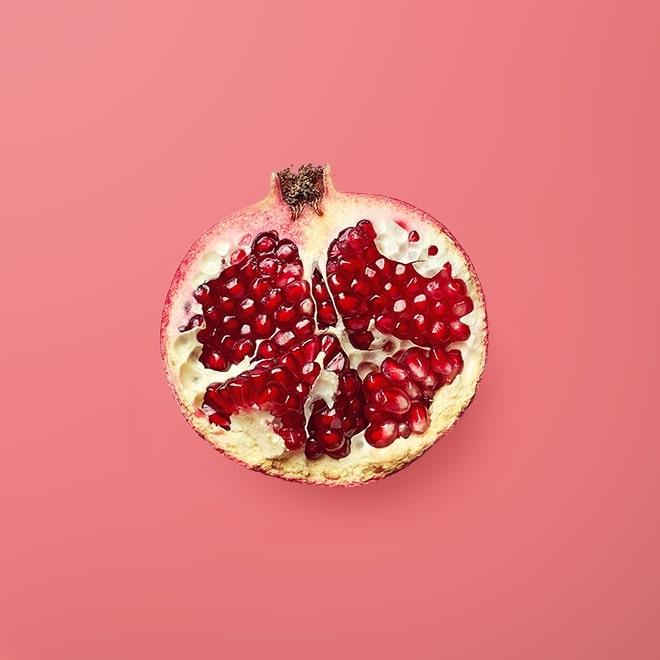Pomegranate




The pomegranate’s name comes from the Latin words for apple “pomum” and seeded “granatum.” The seeds of a pomegranate are called arils, and can be eaten whole. The juice is fantastic as a flavoring for water, cocktails, and fresh juice.
Proper grenadine syrup, the original stuff, was (and is still made in certain craft cocktail bars) solely of pomegranate juice.Today’s syrup is made from the juice of several different berries, citric acid and food coloring.
Pomegranates without blemishes, ruby-red skin, and that feel heavy for their size are what you want to buy.
Store them at room temperature and away from sunlight for and they’ll stay good for a few days.
If you want to extend the shelf life make sure to refrigerate them. Whole pomegranates last up to 3 weeks in the refrigerator, while pomegranate seeds only last up to 3-7 days in the fridge.
When freezing pomegranates, scoop out the seeds and place single layers into the freezer. Once they are frozen, place them into an airtight container or a heavy-duty freezer bag. This process will keep the pomegranate arils good for about at least 2 months.
Pour pomegranate juice in a ice tray and freeze. These look pretty in a glass of water or a pitcher of sangria.
Try adding some pomegranate juice to your next batch of BBQ sauce. The fruity notes added by the juice goes great with the smoke and spice of barbecue.
Due to their molecular structure, pomegranates are added to skin care products. This molecular structure is able to penetrate deep layers of most skin types and provide added moisture.
Pomegranates contain compounds with antibacterial properties called polyphenolic flavonoids.
Pomegranate has been found to rid the mouth of plaque. Next time, when you’re out of mouthwash, use some pomegranate juice.
The seeds of pomegranates can enhance sunscreen by up to 25% and inhibit hyper-pigmentation. Because of the polyphenols in pomegranates it can protect the skin from UVA and UVB.
The first step to removing the seeds from a pomegranate is to cut the fruit in half or into quarters. Then submerge the fruit in a big bowl of water and gently loosen seeds with your fingers. Skim the surface to remove any inedible pulp and then drain the remaining water and seeds through a wire mesh strainer.
You can also try slicing it in half, holding over a bowl and tapping the top with the back of a spoon, the seeds will fall into the bowl.
An easy way to make pomegranate juice is by pulsing the arils in a food processor, or just wrap them in a cheesecloth and squeeze the juice out.
For a refreshing afternoon drink, mix a tablespoon or two of pomegranate juice in sparkling water.
Pomegranates have the most powerful anti-oxidants out of all fruits, which makes it great for your immune system and an anti-cancer powerhouse.
Pomegranates lowers cardiac risk factors, such as cholesterol and blood pressure.
Corrections or improvements? Email us at
content@sidechef.com